From hobby to money: Quezon City engineer cultures and markets Australian red claw crayfish
By BENJAMIN SARONDO
It was out of curiosity that Jovito P. Mabulak Jr., a 27-year old licensed electrical engineer and owner of Nature Trip Farming from Batasan Hills, Quezon City, discovered the cultivation of crayfish, particularly the Australian red claw (ARC).
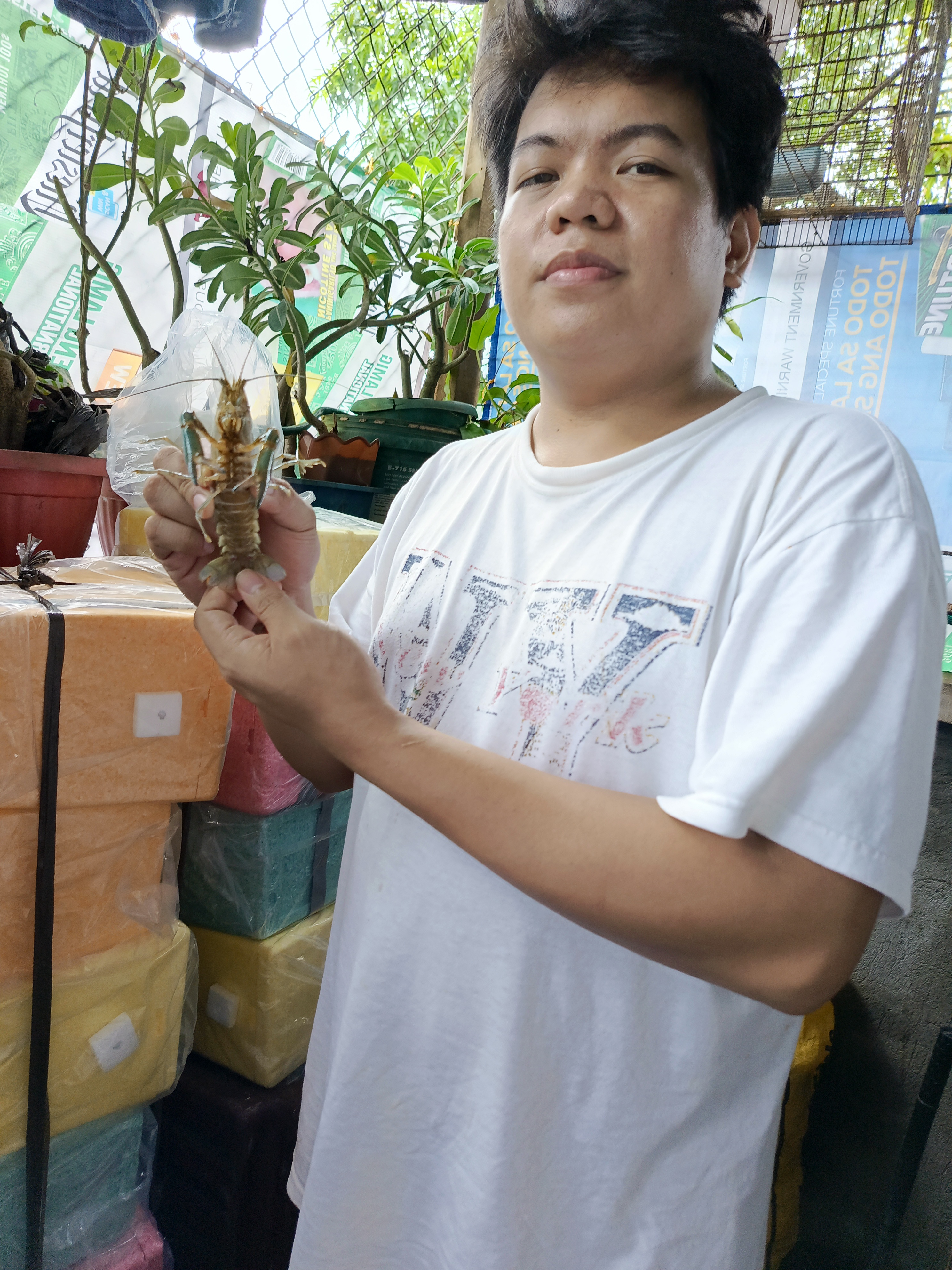
When he encountered the ARC crayfish, its unique characteristics such as being nocturnal and being able to hibernate, made him decide to buy one for himself. Though he does not have any background in raising aquatic species, he planned to only raise them as pets.
“At first, I purchased ARC crayfish just to be my pets and a source of stress relief; since it was the time of the pandemic and I do not have any hobbies, I never intended for it to be a source of income,” Mabulac Jr. said.
He started with three ARC crayfish, one male and two females.
But what made him decide to culture and sell ARC crayfish was their limited supply as both a pet and a food source, the fact that only a few people in the country breed them, and their potential to thrive in the market.
“ARC crayfish can grow from seven to nine inches. It is meaty and can fit up to the size of a plate, which is why other restaurants prefer serving them rather than saltwater lobsters.” He added that in the Philippines, only a few restaurants serve ARC crayfish.
Mabulac Jr. said that most of his customers purchase them as pets. “Another thing I give my customers aside from high quality ARC crayfish are my knowledge and learnings from my firsthand experience in culturing them. They find it easy to take care of ARC crayfish because aside from the tutorials and tips online, they can get my advice.”
“I pursued breeding ARC crayfish since it is not meticulous with the environment in which it should be raised. It can be raised in an aquarium and pond in the backyard,” Mabulac Jr. said.
READ: What you need to know about Australian red claw crayfish
Qualities of ARC crayfish
The Australian red claw crayfish is a tropical species native to the rivers of north-west Queensland and the Northern Territory in Australia. It was only during the 1980s that Australian red claw crayfish were tested for aquaculture, and they proved that this species is suited for cultivation.
In the Philippines, the number of breeders is still low, as is the supply, resulting in a higher price. ARC crayfish are still not available on the public market, but currently, Mabulac Jr. said that a lot of his customers are turning into breeders of ARC crayfish as well.
ARC crayfish are nocturnal species, which means they are more active at night and need hiding spots during the day to avoid sunlight exposure. “It is a good business considering that ARC crayfish are nocturnals, so owners who work in the daytime can still have time to feed and take care of them during the night,” Mabulac Jr. said.
He added that ARC crayfish have shells, and they undergo a molting process where they shed their own shells. Mabulac Jr. describes them as jelly-like objects when molting. This process makes them vulnerable to predation and cannibalism.
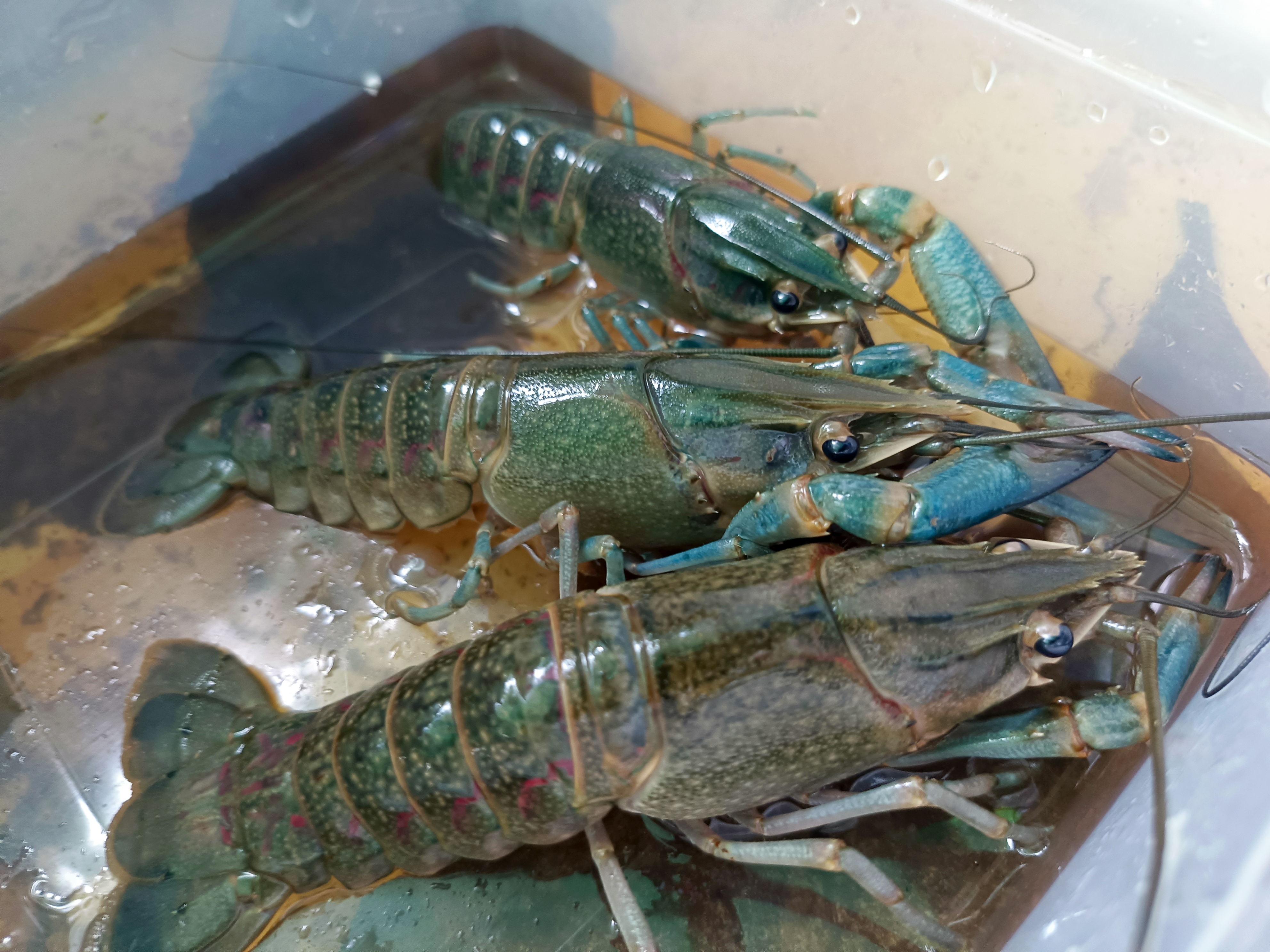
“There was a time that I was moving a molting ARC crayfish, and I had no idea back then what to do when they are in this phase and suddenly it dies,” Mabulac Jr. added.
“Unfortunately, this process costs a business a lot since there is no assurance that a molting ARC crayfish will be successful in moving or breaking their shells. Since they are too sensitive, they cannot be touched or moved into other tanks.”
But in order to protect molting ARC crayfish, Mabulac Jr. stated that owners must provide a lot of hides in their pond that can be made of PVC pipes, mesh bundles, driftwood, and other materials.
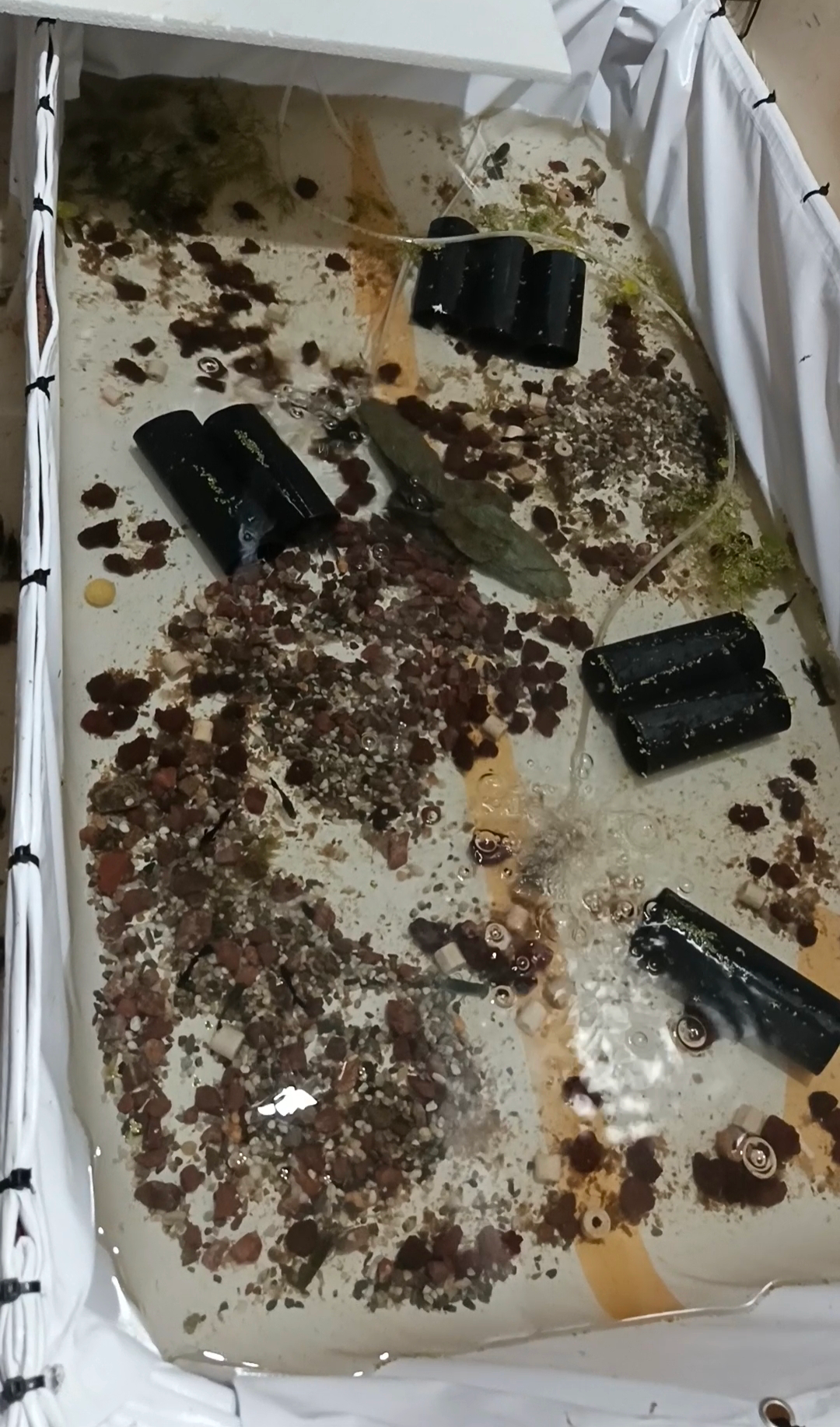
Breeding on their own
The breeding process for ARC crayfish is significant since they breed naturally. But for more effective breeding, Mabulac Jr. suggests that the breeders separate male and female ARC crayfish of the same quality.
“Take the best male and the best female you can find, make sure they are close to the same size, and put them into a separate tank.” This way, it will be efficient for the ARC crayfish to breed.
He added that when the female crayfish is already carrying eggs, the male crayfish must be separated. “I don’t recommend moving the female crayfish, as this can stress her out and cause her to drop the eggs,” Mabulac Jr. said.
Mabulac Jr. checks the female ARC crayfish once a week to see if they are already carrying eggs and repeats the process to ensure the safe laying and bearing of craylings.
To identify the difference between male and female ARC crayfish, it may be based on their color patterns; males have a red patch on the claws, which is lacking in females. Another distinction is that males have an opening on one of the fifth legs, while females have an opening on the opposite third leg.

Culturing crayfish is meticulous
Mabulac Jr. shared that when he was starting his business, he encountered a lot of challenges because of his lack of knowledge about taking care of and breeding ARC crayfish. He recalled that there was a time when his crayfish died, and he was clueless why. Mabulac Jr. is only reliant on the videos he can access online, but not all of the information he needs is available.
Mabulac Jr. also cannot connect to other Filipino ARC crayfish breeders to ask for queries and advice since there are only a few of them. But he said that first hand experience helped him learn and understand ARC crayfish, and he shares his knowledge with his customers and other people who are interested in starting their own ARC crayfish breeding business.
After overcoming these challenges, he also shared that there are breeding problems that he is still encountering. Mabulac Jr. said that ARC crayfish have cannibalistic characteristics. It is the nature of this species to be a predator of other ARC crayfish.
“This is the nature of ARC crayfish, and there is nothing to do to change their behavior toward other ARC crayfish,” Mabulac Jr. said. This results in a low survival and production rate for ARC crayfish.
For those who will start their business in ARC crayfish, Mabuloc Jr. highlighted the significance of hides in breeding; it will really help the business to produce a higher number of ARC crayfish, which can be translated to a higher income.
But he noted that the most important thing for an individual who will start this business is their willingness to learn and adapt.
“They cannot assure that they will have a high income since they are just starting the business; there are times that the loss is higher than the benefit they gained. But learning through their experience can help them understand more about ARC crayfish so they can be effective owners and breeders,” Mabuloc Jr. said.
“Marketing ARC crayfish is not hard.”
Despite the challenges he encountered in breeding, Mabulac Jr. said that marketing the ARC crayfish is not hard for him since the competition in the market is not high but the demand is, both for breeding purposes, as pets, and for food consumption.
“All we need to do is inform the online market that we have ARC crayfish, and they will immediately inquire and purchase from us,” Mabulac Jr. said. Presently, they have high sales of ARC crayfish.
“From one customer to another, we are lucky that some YouTube vloggers who purchase ARC crayfish from us recommend us to other people,” Mabulac Jr. added.
Mabulac Jr. also ships ARC crayfish to different parts of the country, from Luzon to Mindanao. But he always assured his customers that the quality of the crayfish would not be compromised during the shipment.
He said that they have tried and tested ways to ship ARC crayfish and are confident that the customers will receive them alive and in good condition.
“I put each ARC crayfish in a separate tupperware and hold them in a styro box. Then I lay them down on ice, and when the crayfish detect the coldness, they will just hibernate throughout the shipment, and they can be placed back in water to wake them up,” Mabulac Jr. said.
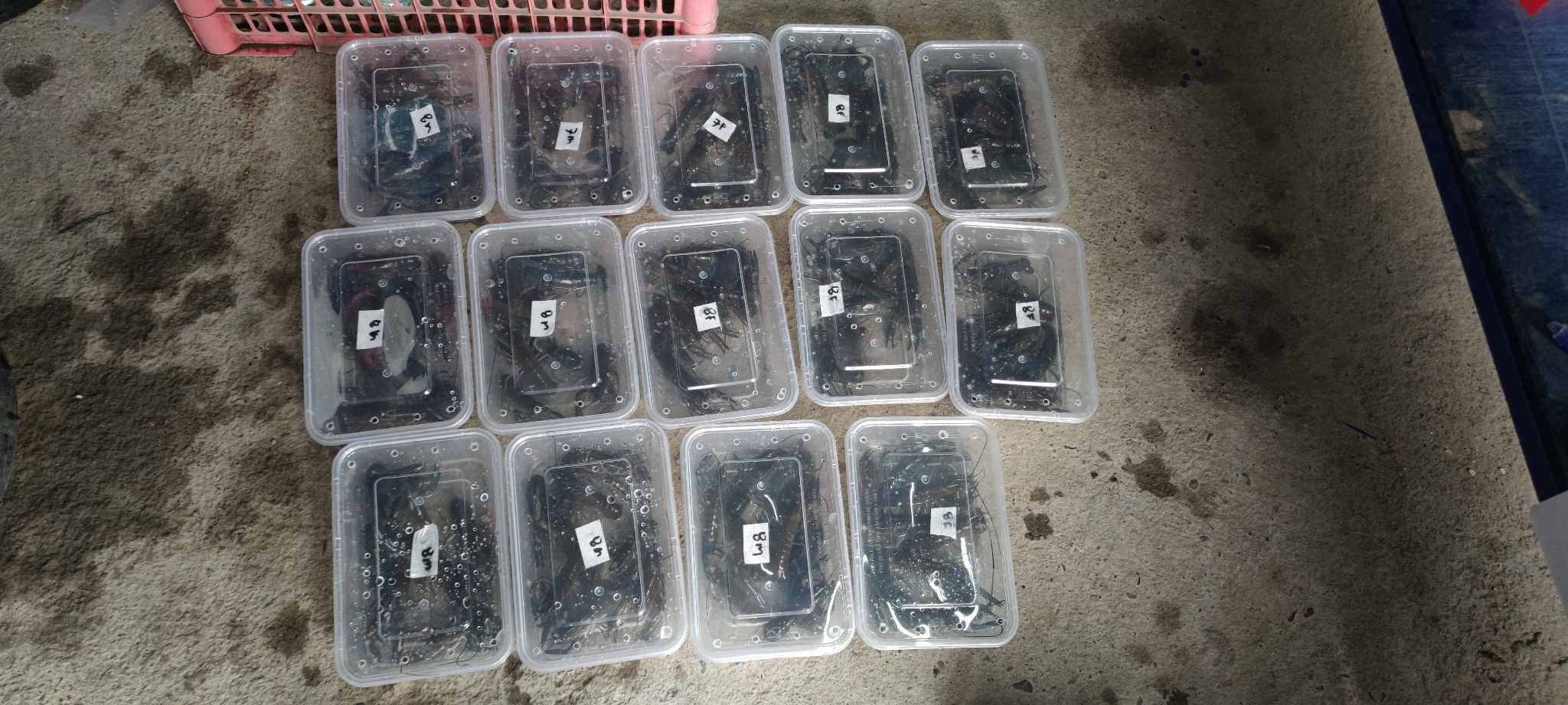
Leaving the country but staying in business
One thing Mabulac Jr. loves about culturing and breeding ARC crayfish is that it is low-maintenance.
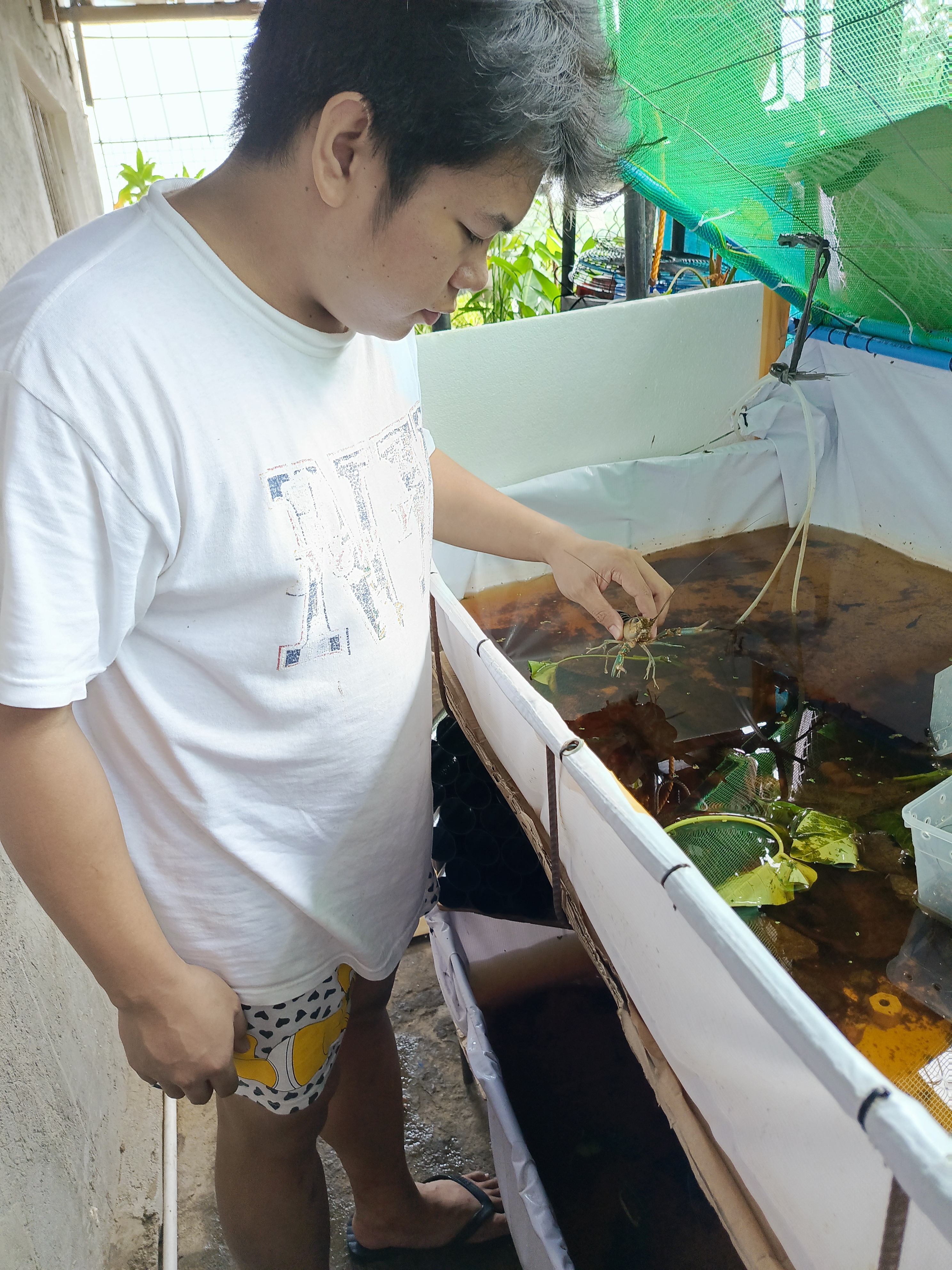
According to Mabulac Jr., breeding ARC crayfish favors his situation since he will soon be working abroad, so his wife, who is currently working for a BPO company, will be focusing on his business. “It does not need to be monitored daily; they just have to be fed at night, but they will breed naturally in the presence of hides,” Mabulac Jr. said.
He said that his wife will be responsible for taking care of the ARC crayfish, including feeding, breeding, packaging, and shipment, while he will be in charge of marketing them online. “Despite the long distance from our pond, we will still continue our ARC crayfish business since it is doing well in terms of income,” Mabulac Jr. added.
Mabulac Jr. shared that he is grateful that he watched the video about ARC crayfish and pursued the culturing and breeding business. In addition to providing me with financial security, Mabulac Jr. stated, “I always visit our pond while drinking my cup of coffee in the morning. It relieves my stress.”
Mabuloc Jr. said that even though ARC crayfish is unknown to the public, he is looking forward with excitement to the day when ARC crayfish will be in trend and sold in public markets. Others may find it hard to take care of them as pets, especially for culturing and breeding that will involve the molting process, which has a low survival rate without proper knowledge. Mabulac Jr. added that it takes effort and dedication to learn how to manage the meticulous living of ARC crayfish, but it has a high reward because of its value and price.
Photos by Jovito P. Mabulac Jr.